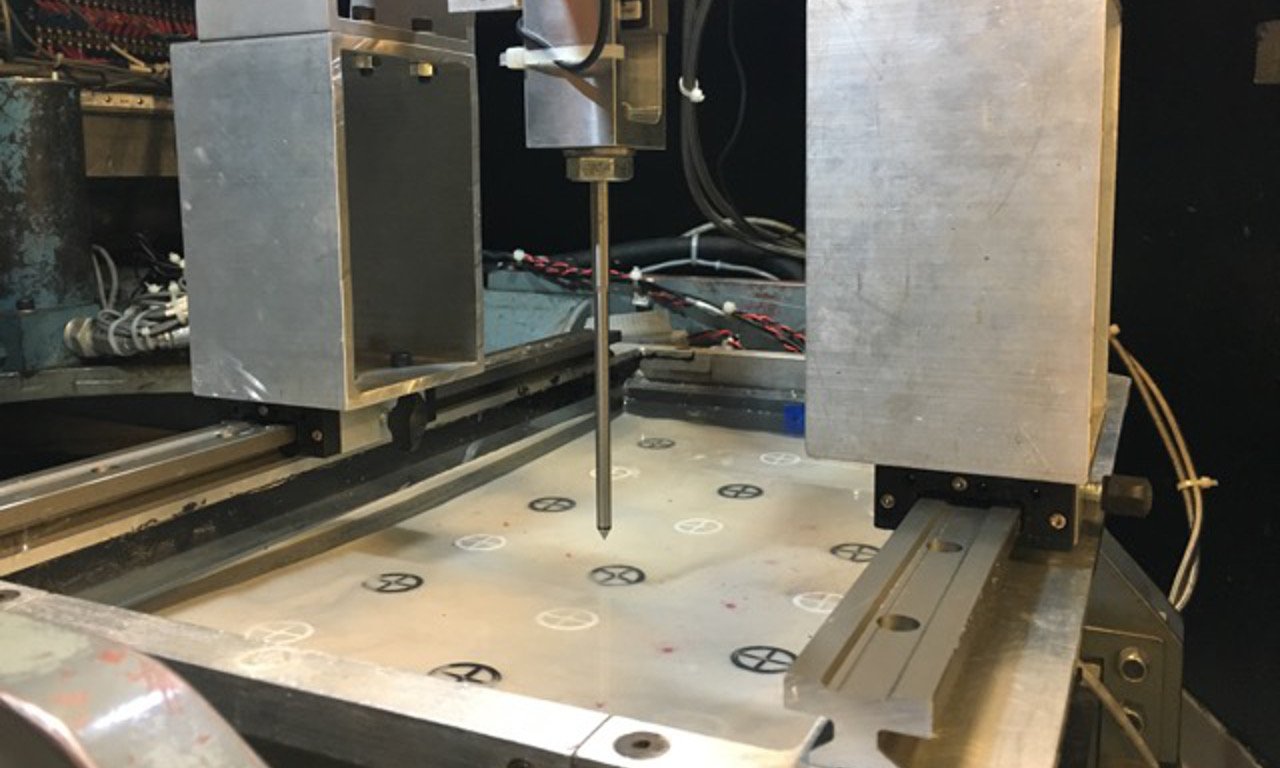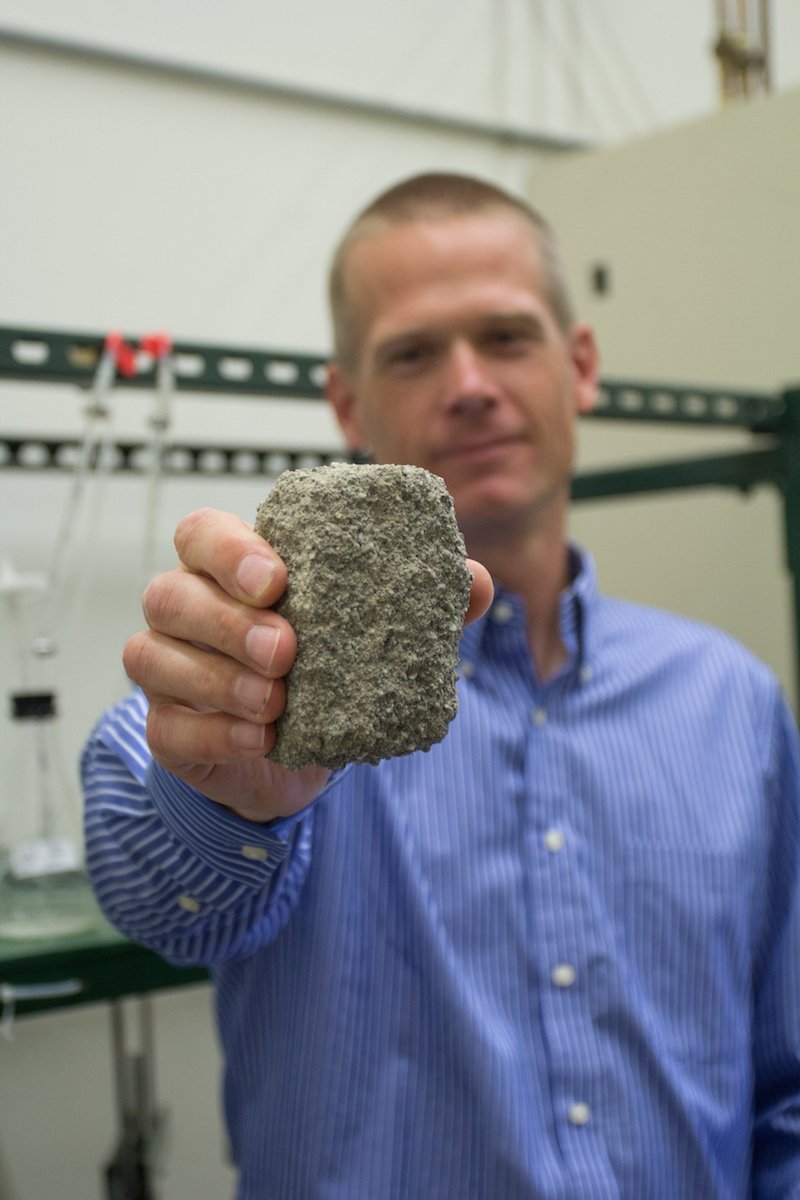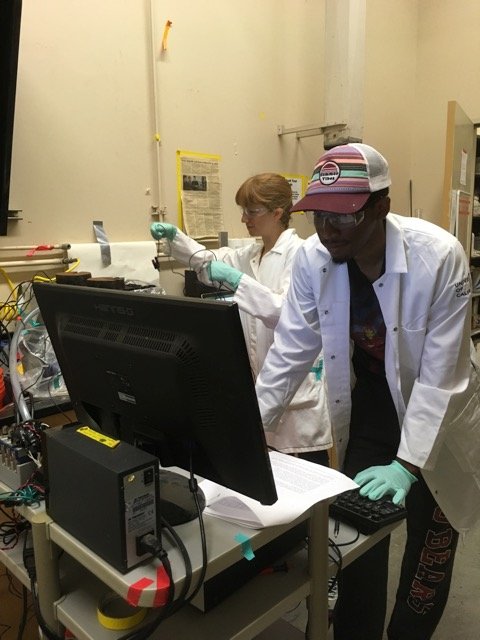Hazard Researchers Embrace Biogeotechnics
UC Davis Engineers Deploy Natural Processes to Mitigate Natural Hazard Damage
Published on July 31, 2017

Cone penetration testing in small centrifuge model of loose liquefiable sand. (Photo: Trevor Carey)

Jason DeJong holds a piece of sandstone-like material created in his lab by the action of microbes on loose sand.

Kate Darby (back), graduate student, and Dexter Harris, NHERI REU student from Morgan State University, measuring shear wave velocity in MICP treated centrifuge model.
Hazard engineers at UC Davis are involved in a rich new subfield of geotechnical engineering: biogeotechnics. Bio-geo researchers discover ways to harness existing natural biogeochemical processes, such as microbial soil cementation. They also adapt designs inspired by natural processes, such as tree roots that naturally stabilize soil to adapt to environmental loads from wind and earthquakes.
UC Davis is part of a national NSFfunded effort called the Center for Biomediated and Bio-Inspired Geotechnics, headquartered at Arizona State University (NSF award #1449501). The CBBG team at UC Davis is headed by Jason DeJong, a geotechnical engineering professor of engineering.
Bio-inspired techniques offer unique solutions to problems, DeJong says. Natural systems provide unique and efficient engineering solutions that require minimal energy expenditure.
For more than a decade, DeJong has studied ways to exploit natural microbial processes to prevent soil liquefaction. Microbially induced calcite precipitation (MICP) has shown great promise, he says. In one of the current NSF CBBG projects, he is testing ways sandy soils can be modified by natural microbial activity that strengthens and stiffens soils. Certain microbes facilitate the precipitation of calcite between sand particles, producing a material much like sandstone. Liquefiable sand can be transformed into sandstone-like material in a matter of days. Another technique which generates small bubbles of nitrogen gas is being tested in parallel. This component of the project is being led by CBBG collaborators Profs. Ed Kavazanjian and Leon van Paassen at ASU.
Using the centrifuges at the NHERIfunded facility at the Center for Geotechnical Modeling, DeJong and his colleagues seek to better understand and quantify how microbial calcification and desaturation can change the resistance of soil to earthquake loading. Ideally the results will how both treatments can increase the resistance to liquefaction occurring for most earthquake events and reduce the consequence if liquefaction is triggered during extreme events.
As well as improving liquefaction-prone soils, the biomediated processes may prove a sustainable, inexpensive method of preventing earthquake damage to geotechnical and structural systems.
Other UC Davis engineers involved in biogeotechnical research to prevent damage from natural hazards include Dan Wilson, Ross Boulanger and the UC Davis graduate student cohort.
For more details on the bio-mediated soil improvement work underway at UC Davis, visit the Center for Bio-Mediated and BioInspired Geotechnics (CBBG).
NHERI Quarterly
Summer 2017
NHERI Five-Year Science Plan Published
Summer Updates from the NHERI NCO
The Importance of Data Publishing with Ellen Rathje
Project Aims to Revolutionize Design in Wind Engineering
Design Guidelines for Roof Pavers Against Wind Uplift
Hazard Researchers Embracing Biogeotechnics







